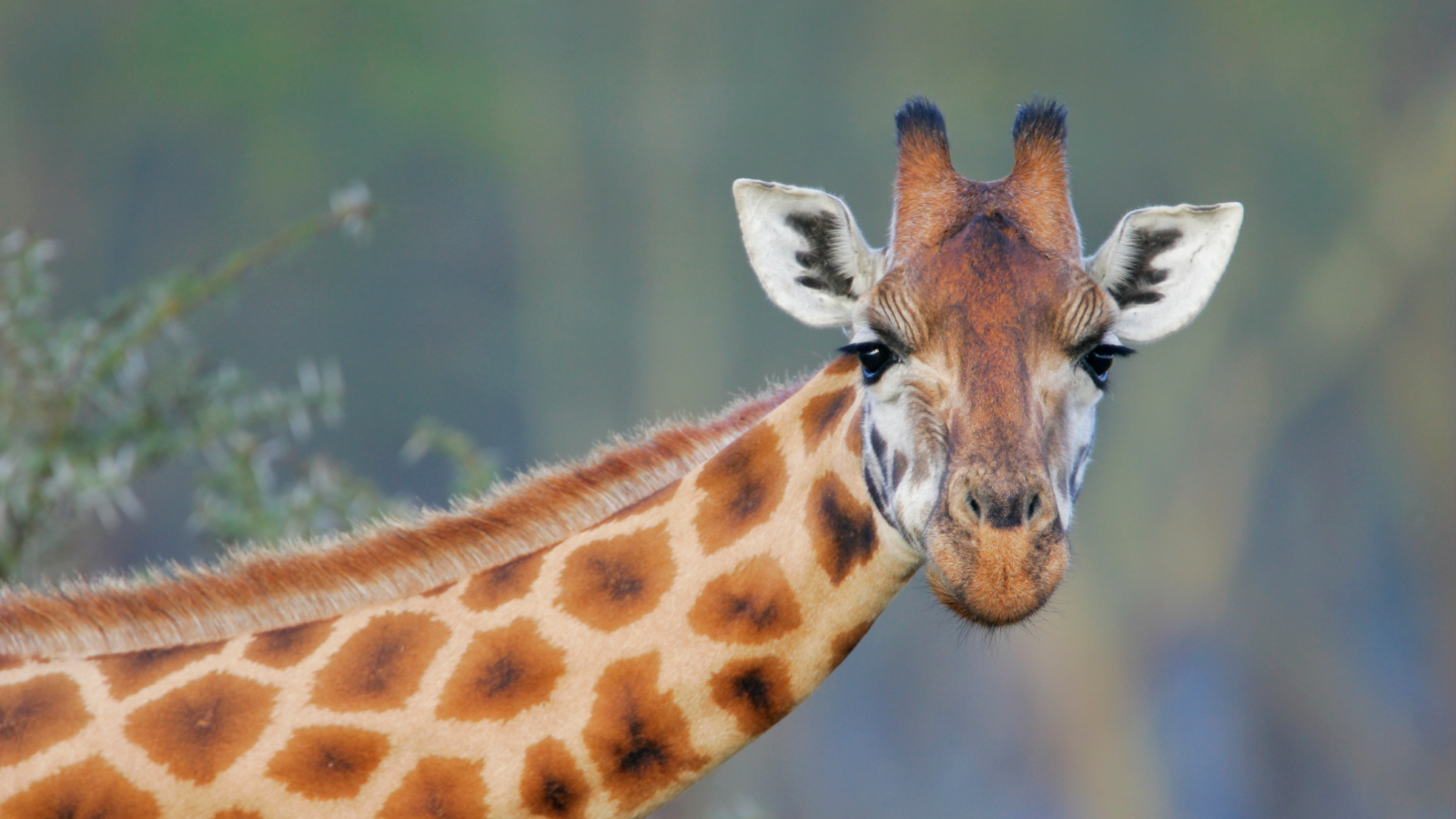Why do giraffes have spots?
Giraffes' distinctive spots are more than just for show. So why do these tall animals have them?

Giraffes are best known for their towering necks, but their beautifully spotted coats are just as distinctive — and they serve important functions.
So why do giraffes have spots?
One reason is for camouflage; a giraffe's spots help it blend into its surroundings. The irregular markings break up the animal's outline, especially when sunlight filters through trees and shrubs. This makes them difficult to see, despite their giant size, even from just feet away.
"Depending on the vegetation where they live, they will have appropriate markings," Mitchell told Live Science in an email. For example, some researchers have observed that the shapes of the patches in a giraffe's coat often correspond to the branching patterns of acacia trees, which are common on the African savanna.
Camouflage is especially important for young giraffes, whose survival depends largely on staying hidden from predators. A 2018 study found that larger and rounder spot patterns were linked to higher calf survival rates — a connection the researchers attributed to the more effective camouflage. The study also showed that giraffe mothers and their calves had very similar coat patterns, suggesting that some characteristics of a giraffe's spot shape are heritable.
Related: Why do so many baby animals have spots?

Sign up for our weekly Life's Little Mysteries newsletter to get the latest mysteries before they appear online.
A less obvious — but equally important — function of a giraffe's spots is to regulate body temperature. Giraffes can't sweat or pant, yet they live in some of the hottest environments on Earth. So how do they stay cool? Through their spots.
Beneath each patch lies a dense network of blood vessels. "When a giraffe needs to lose heat, blood vessels under a patch dilate and thus send blood to a patch," Mitchell said. This blood moves closer to the skin surface, where it can release heat. "Thermal photographs of giraffes in hot conditions confirm this idea," Mitchell added, because they show that the dark patches are warmer than the surrounding skin.
A study of Masai giraffes (Giraffa camelopardalis tippelskirchi) that is currently under peer review builds on the idea that spots are important for thermoregulation. It found that larger spots appear to offer an advantage in colder climates, as the blood vessels beneath them can constrict to conserve heat. In contrast, smaller spots are more beneficial in hotter conditions, since larger, darker patches tend to absorb more solar heat.
Interestingly, the researchers also found that spot patterns influenced the survival of adult male Masai giraffes, but not females, during extreme temperature swings. One possible explanation is that female giraffes are more sedentary and tend to stay in groups with calves, while males roam across broader territories and face more varied environmental conditions.
The effects observed in Masai giraffes in Tanzania likely apply to other giraffe populations as well, Monica Bond, a wildlife biologist at the University of Zurich and co-author of the study, told Live Science.
Coat patterns also help giraffes to recognize their kin, Bond said. In a study published in 2022, Bond and her colleagues analyzed spot traits — like shape, size and orientation — of 399 adult female Masai giraffes in the Tarangire ecosystem of northern Tanzania. They found that Masai giraffes form stronger social bonds with giraffes whose coat patterns resemble their own. Because coat patterns are known to be passed down from mother to offspring, these results suggest that spot pattern serves as a visual cue for kin recognition.
Finally, spot patterns in mammals often signal its overall health and social status and play a role in mate choice, according to a 2017 study. This may be true for giraffes, although it hasn't been studied directly, Bond said.
More than just beautiful patterns, giraffe spots are tools for survival.
Animal quiz: Test yourself on these fun animal trivia questions

Clarissa Brincat is a freelance writer specializing in health and medical research. After completing an MSc in chemistry, she realized she would rather write about science than do it. She learned how to edit scientific papers in a stint as a chemistry copyeditor, before moving on to a medical writer role at a healthcare company. Writing for doctors and experts has its rewards, but Clarissa wanted to communicate with a wider audience, which naturally led her to freelance health and science writing. Her work has also appeared in Medscape, HealthCentral and Medical News Today.
You must confirm your public display name before commenting
Please logout and then login again, you will then be prompted to enter your display name.



